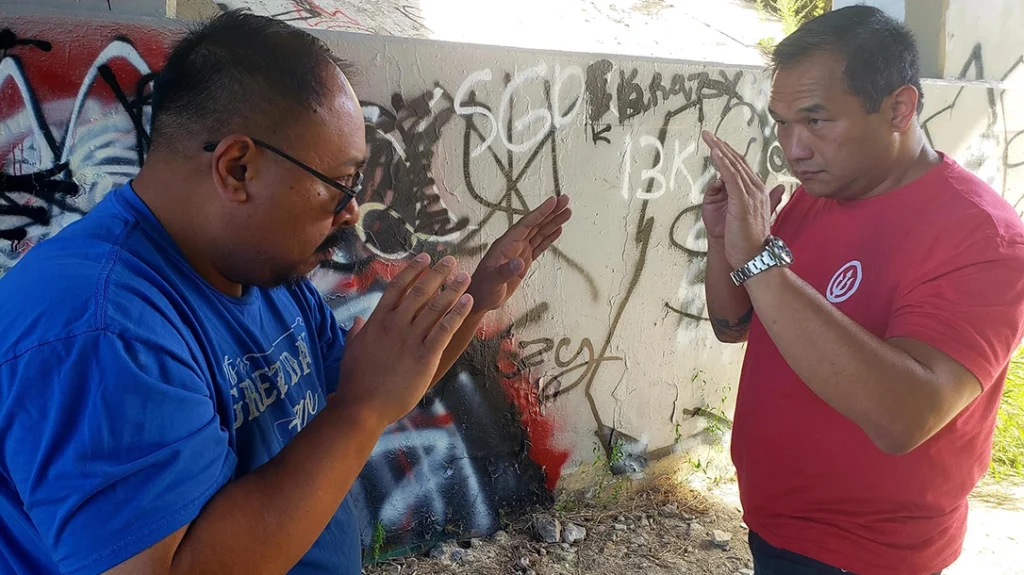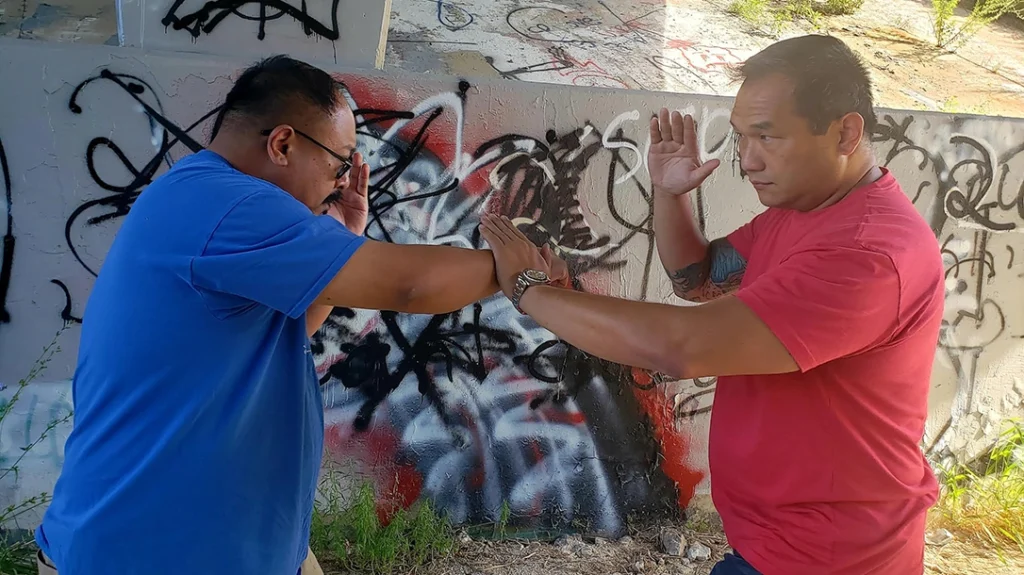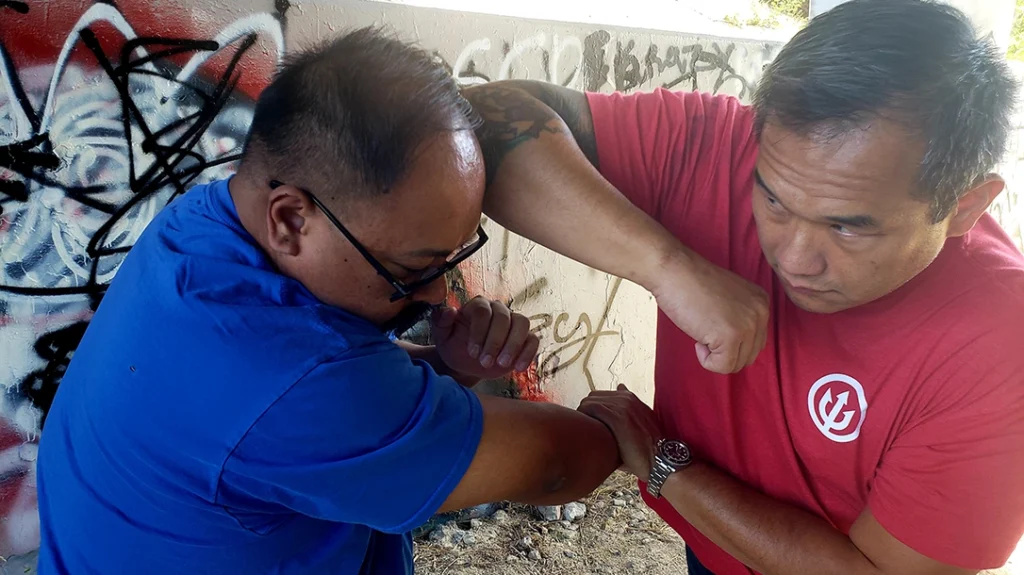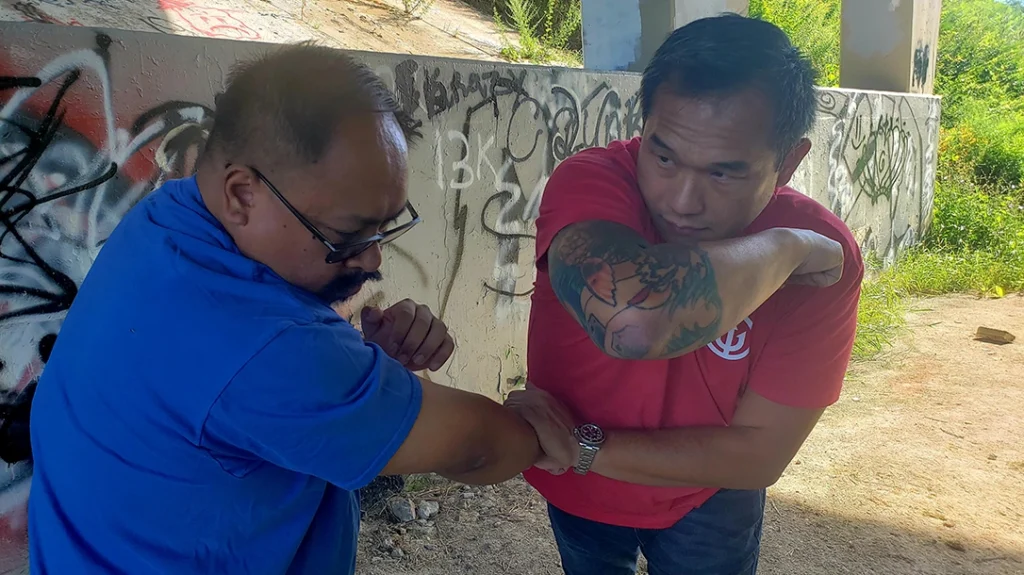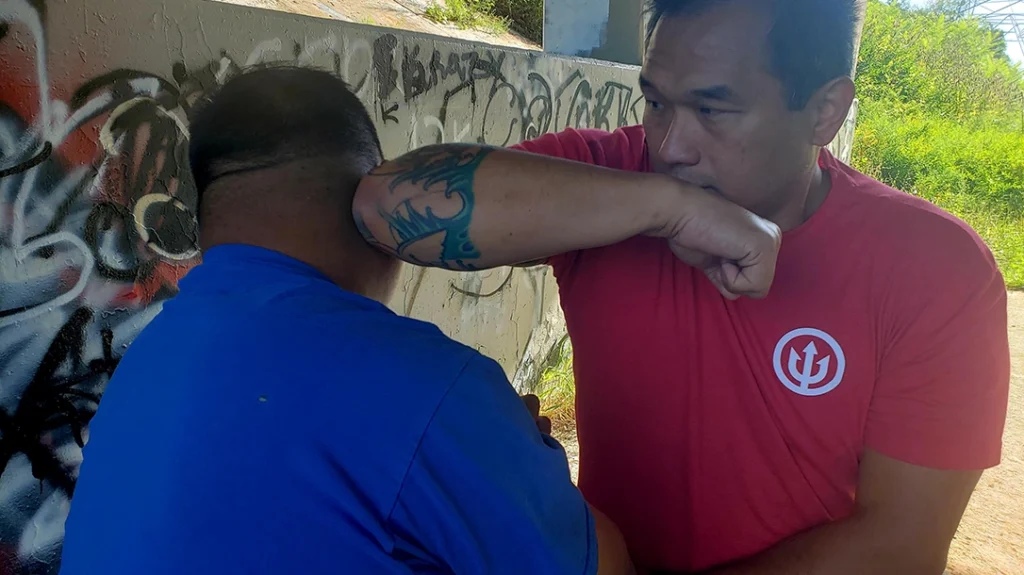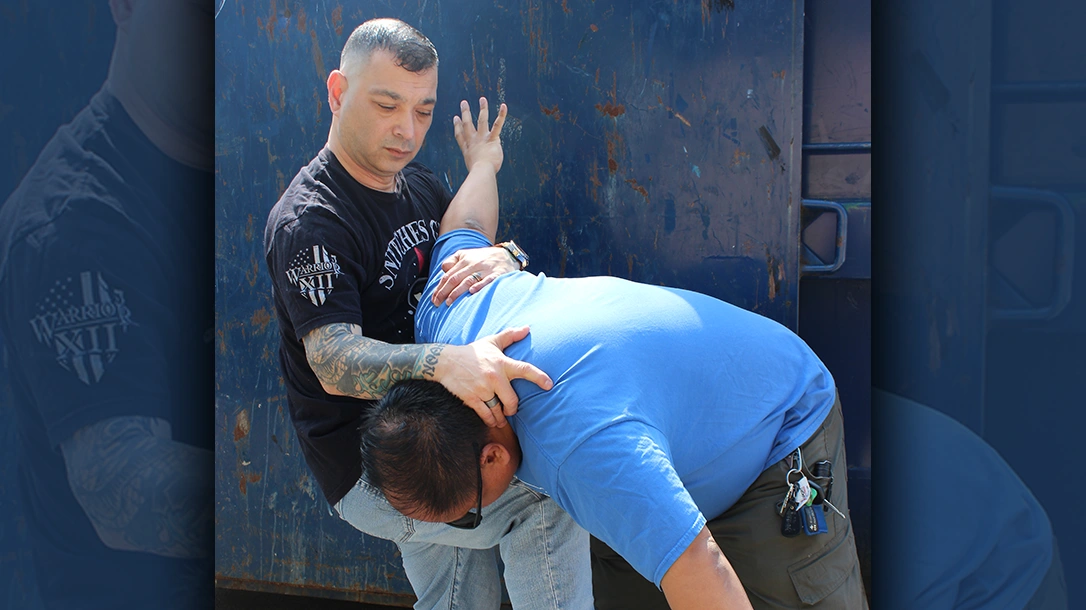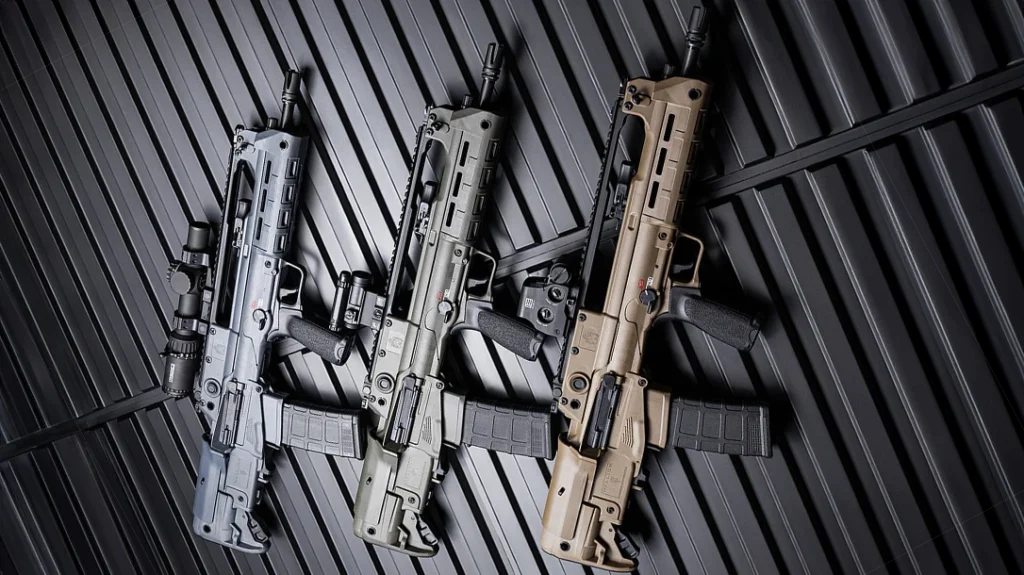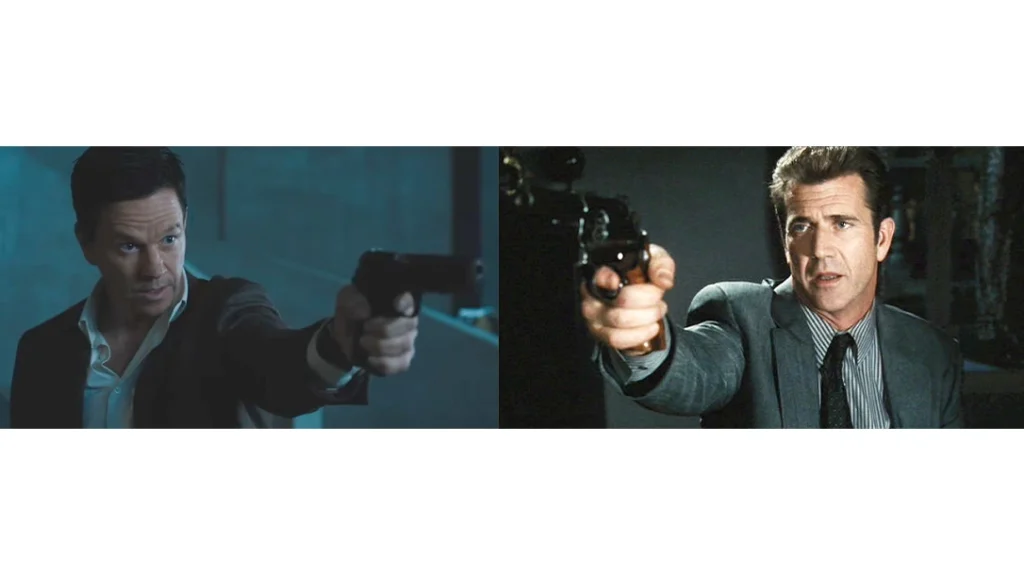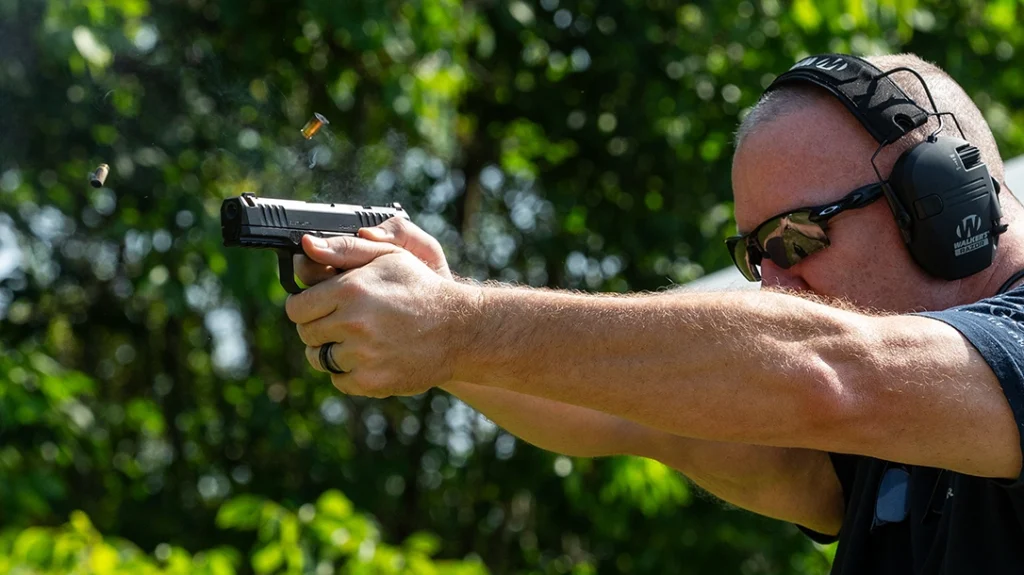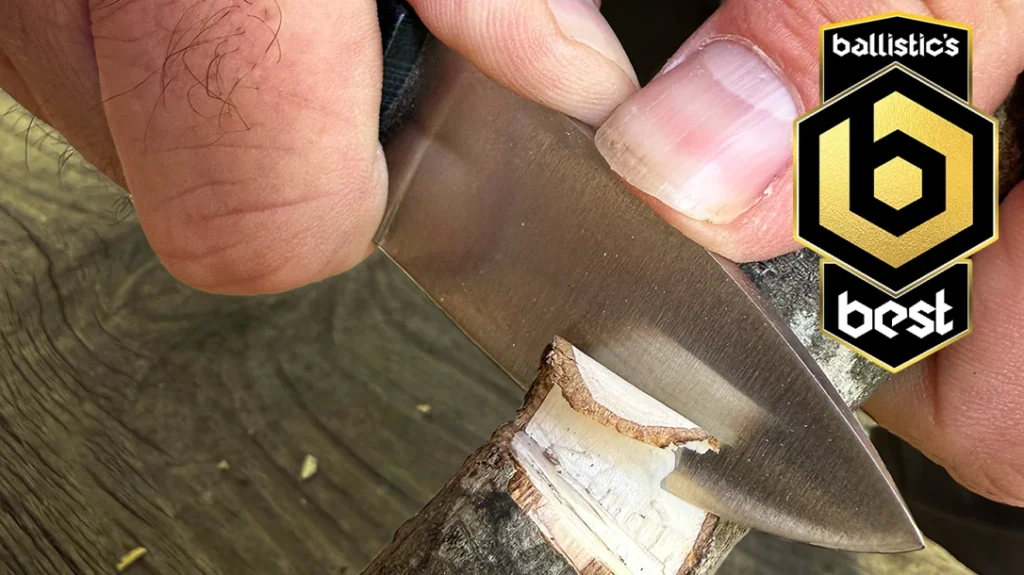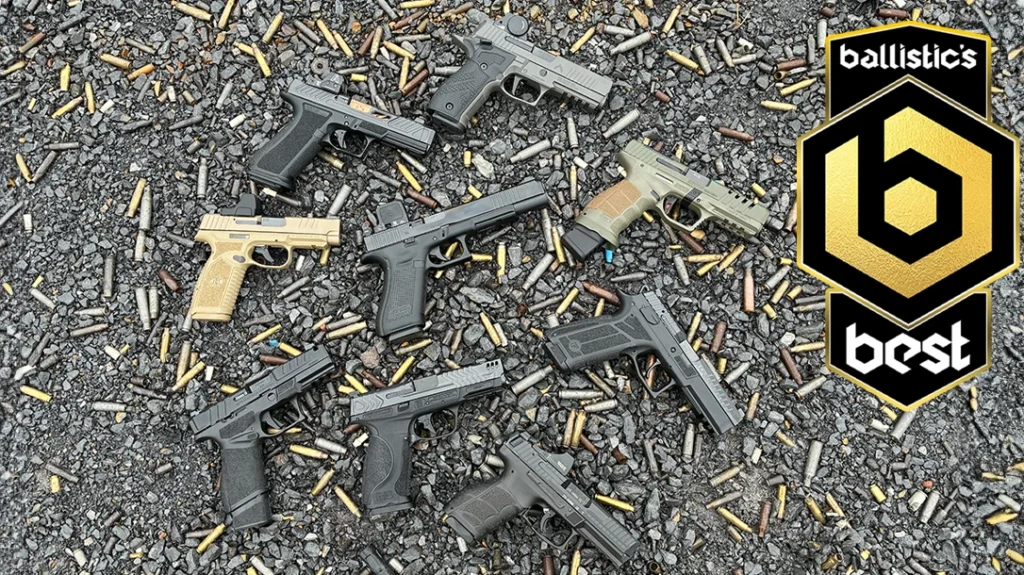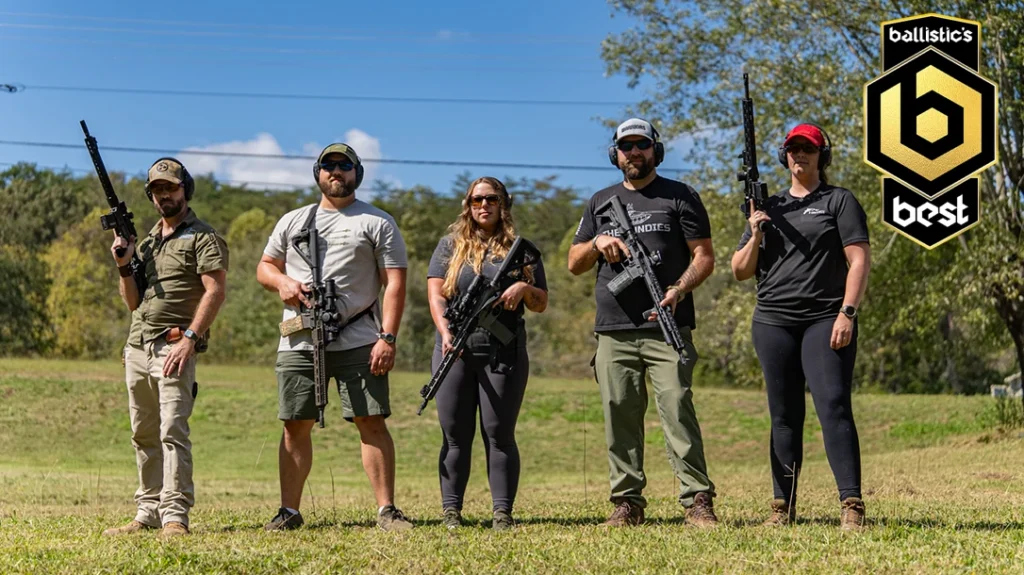It’s undeniable that knee and elbow strikes can be quite savage, especially for the person on the receiving end. From traditional Muay Thai to the Octagon, these strikes have been proven fight enders time and time again. So, with the argument of “will that work in the ring” being a thing of the past, let’s take a dive into how normal, everyday, non-professional-ring-fighting people can practice and deliver some basic yet effective elbow and knee strikes for street self-defense.
Throwing Basic Knee and Elbow Strikes
Almost every martial art or combatives system already has knee and elbow strikes in it. I have always taught that a punch is an extension of an elbow, and a kick is an extension of the knee.
What do I mean by this? If you are a solid kicker, you already know that a front kick chamber and a roundhouse kick chamber are basically knee strikes. If you are too close to throw a roundhouse kick, then you throw a knee. You just drop your weight and sink the knee in on the strike.
Advertisement — Continue Reading Below
The same basic principle applies to a cross. If you are too close to throw a punch, you throw an elbow.
Combative knee and elbow strikes are pretty much universal in any martial arts system. Sure, there are several variations of every knee or elbow strike. However, they all serve the same basic purpose: To keep you from getting overwhelmed when you find yourself in a close-quarter fight.
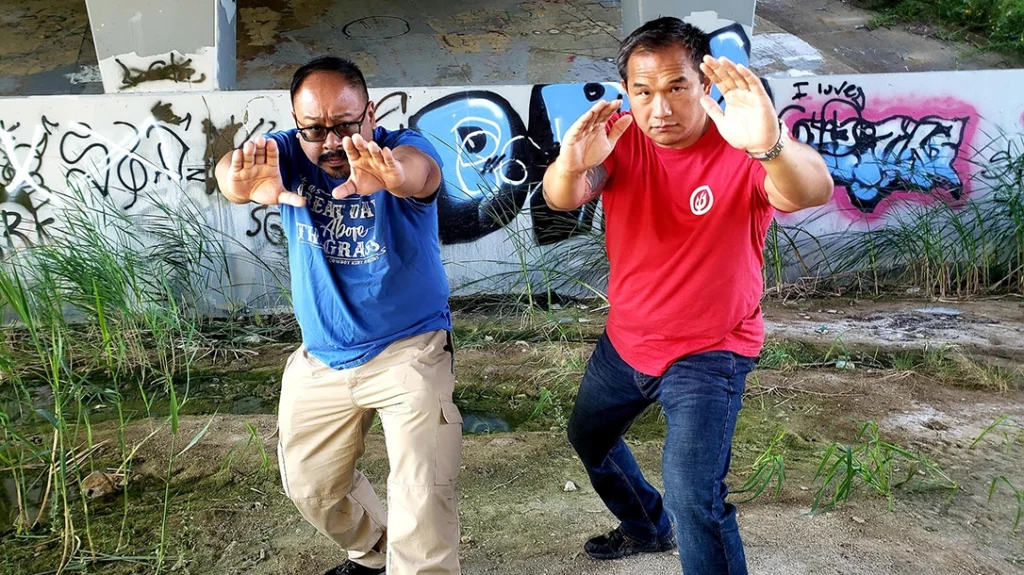
Advertisement — Continue Reading Below
In today’s article, we are going to cover some very basic striking principles. Why? Because basics work in and out of the ring, making them ideal for street defense. While flying knees and “Ong-Bak” style flying elbows have ended fights in MMA, those are high-risk maneuvers that take a lot of skill and practice to deliver.
Translation: you are not going to get those types of skills out of simply reading a magazine article. So, to keep things simple, we are going to discuss basic counters and elbow and knee strikes. How, why, and when they work, and how to execute them at a fundamental level.
Practice Your Strikes from An Arms Reach
Again, knees and elbows are close-range strikes. You can use them to counter and move to bridge the fight gap. However, if you are too far to throw a knee or elbow, then just throw a punch or kick.
Advertisement — Continue Reading Below
In the above and below photos, you will see Frank and Sam using their arms to keep their distance. This type of move/position allows you to protect yourself by blocking and striking. Likewise, you can push a person back to the range that you want to control and check the distance of the person in front of you. If you are close enough to touch them, you are close enough to hit them.
This position also easily transitions into a cross-elbow strike. As Frank and Sam demonstrate a right elbow, they are using the opposite hand to cover their heads to defend against a counter. Also, it’s easy to throw a counter left-handed strike from this position.
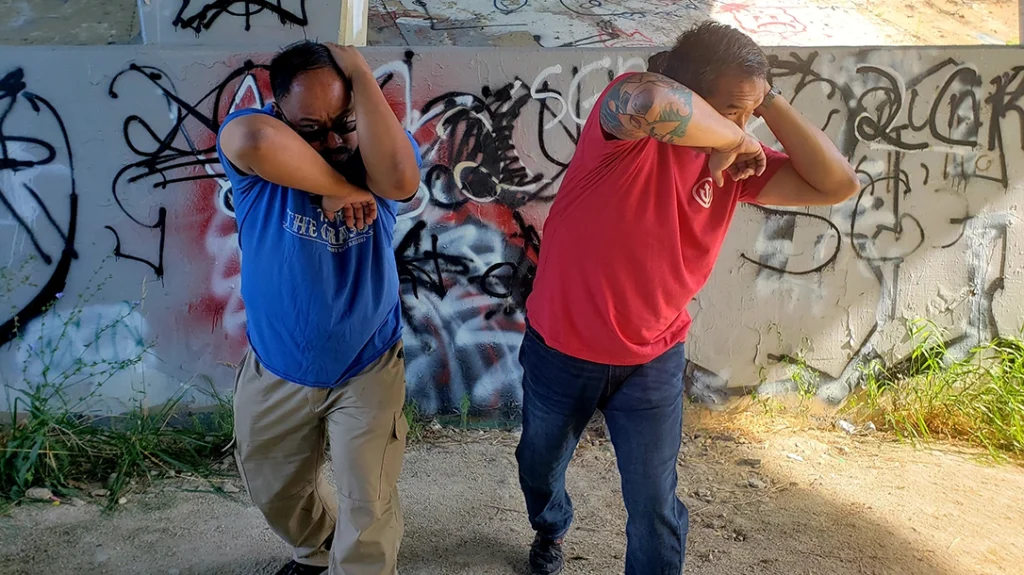
Advertisement — Continue Reading Below
Elbows can be used both as strikes and blocks to counter attacks. An attacker can really damage their hand when colliding against a solid elbow strike. If a person can’t make a solid fist, they will have a hard time throwing a punch.
Find A Training Buddy
Heavy bags are great for practicing knee and elbow strikes. However, it’s not the same as training with a bud who’s holding a kicking/striking shield or focus mitt for you. Plus, when throwing knees, you need a partner to figure out how to position your controlling holds against a live, somewhat resisting partner.
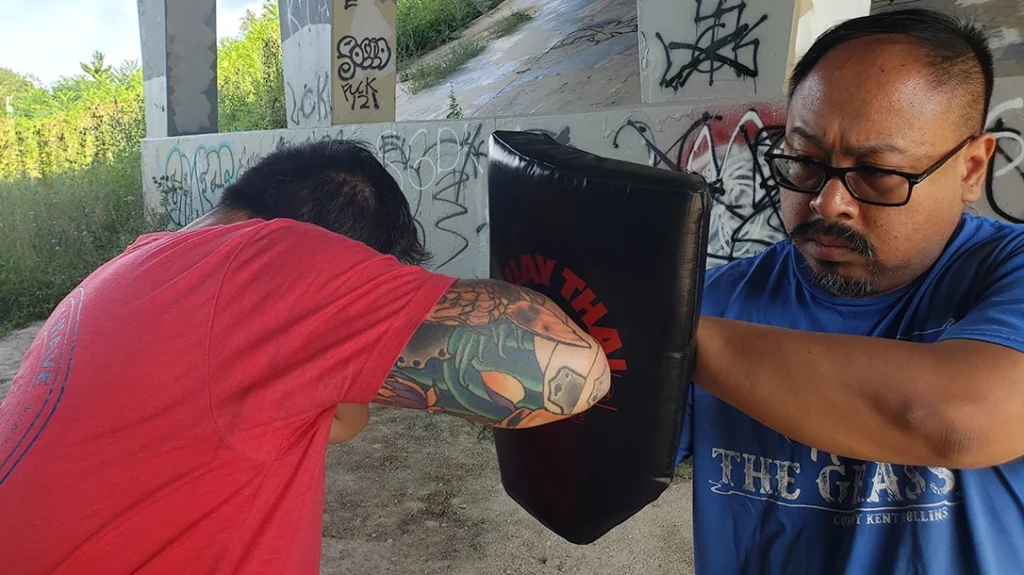
Advertisement — Continue Reading Below
Remember, these strikes hurt a lot. So, if you hurt your training partners, you will quickly find yourself training solo.
Safety is up to you, though. So, it’s important that the person holding the shield or striking mitt understands how to hold it correctly. The basic rule is that one hand supports the opposite wrist. Push a bit into the strikes, meet force with force—don’t just absorb the strike energy.
Always Control Your Attacker Before Delivering a Knee
Controlling your opponent/attacker is essential if you want to land a solid knee strike. In this next series of photos, the author demonstrates basic control over his attacker to create an opening to strike.
Advertisement — Continue Reading Below
Remember, we live in a world of MMA and grappling. A good grappler may attempt to hook behind your knee and take you down if you do not obtain good control before launching a knee. So, be prepared to sprawl.
Demonstration
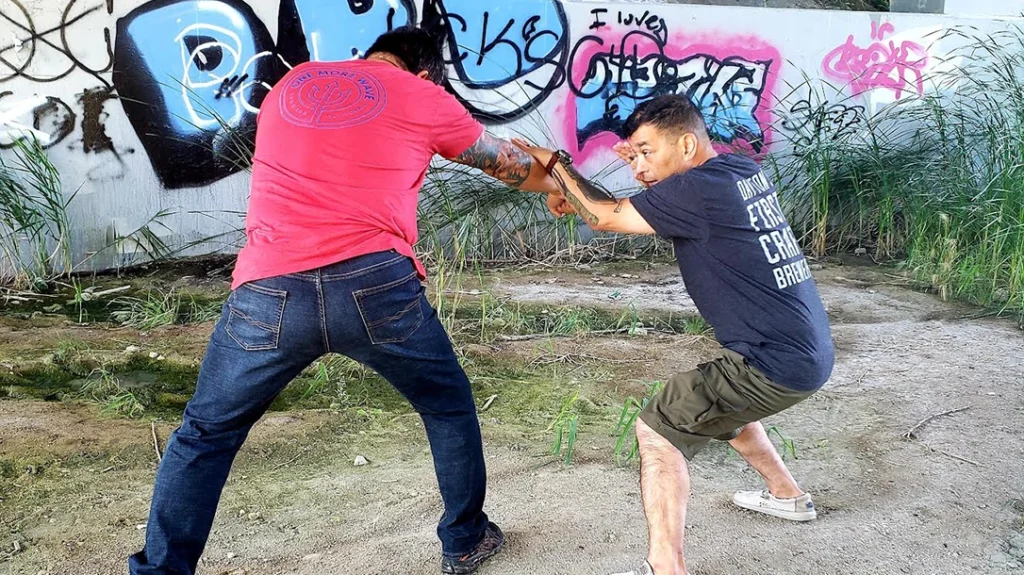
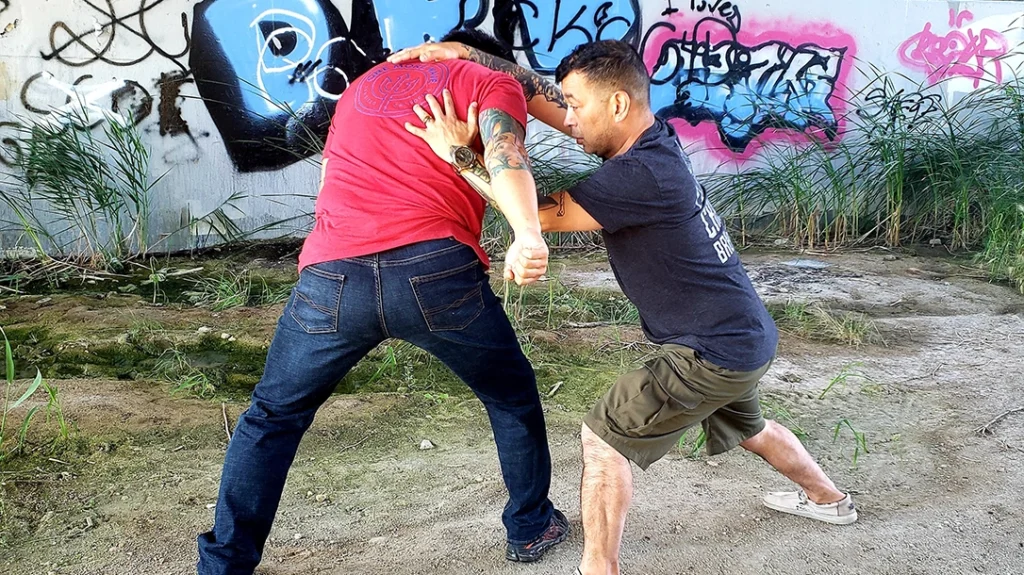
Advertisement — Continue Reading Below
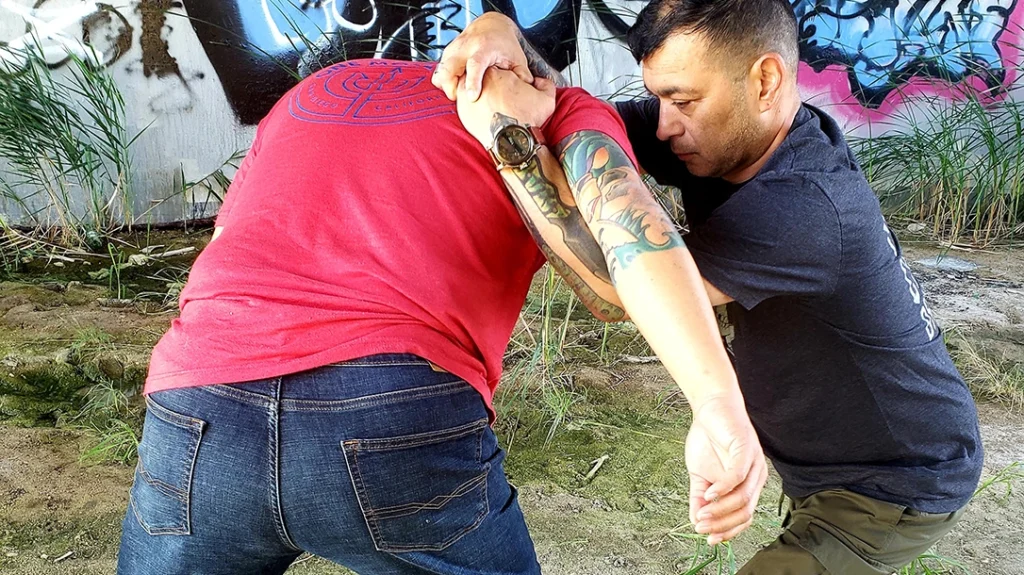
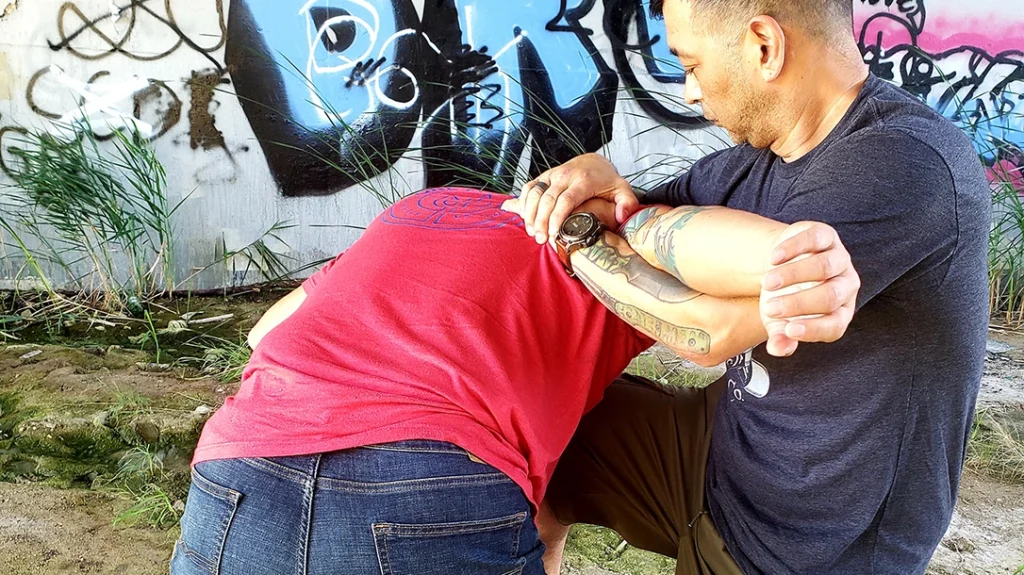
Throwing Elbow Combinations Against a Punch
In this next series of pictures, Sam will demonstrate how to block/counter a strike, close the fighting distance, and counter with elbow strikes. These strikes may or may not end the fight. But one thing is certain: they will make an attacker think twice about getting too close. They hurt like hell. At a minimum, they should be enough to stun your attacker and allow you to get away.
Advertisement — Continue Reading Below
Be aware that it is possible to cause extreme harm or even death when striking an attacker in the head and temple with full-power elbows. Always be able to justify the level of force you deliver should the boys in blue show up. You may end up in handcuffs and find yourself in court if you can’t.
Some readers may think, “Well, this is self-defense; I can beat the hell out of anyone who wants to FAFO.” To that, I would say think twice before you smash someone’s head in with ground and pound elbows. Self-defense is always about stopping the threat and getting away to safety.
Demonstration
